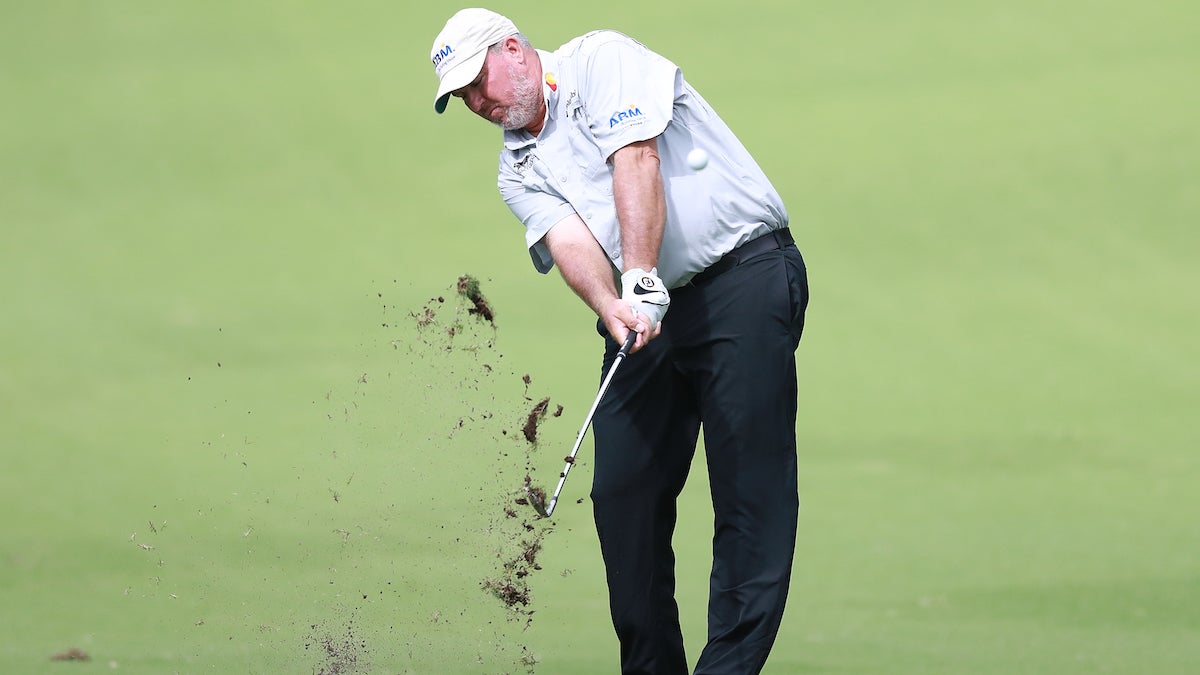10 strategy tips for golfers
BY: KELLIE STENZEL, TOP 100 TEACHER MAY 9, 2020
Good golfers often look as though they aren’t working very hard. This is because they’re being more efficient and making smart decisions. You can, too. Here’s how:
1. Give it a rip
Longer drives convert to lower scores. This is a proven fact and one of the most efficient paths to improving your score. There is an old golf joke that has a bit of truth to it: “Swing in case you hit it.” I often say this when teaching. Swinging slowly and carefully in an effort to play right down the middle of the fairway is overrated. Be willing to swing with speed and momentum assuming you can maintain your balance to take advantage of shorter distances into your target and green.
2. Have a ‘trusty’ go-to longer club
Having a longer fairway shot that you trust can be valuable, because these are some of the most difficult shots in golf for recreational golfers.
Often golfers facing a long shot will instinctively grab whatever club will get them the closest. But that can get them into trouble. Instead of forcing yourself to hit a 3-wood, put in play a longer club that you feel comfortable with. Maybe it’s your 5-wood or a hybrid. A relatively consistent club that you can trust, which will help you build confidence throughout your round.
3. Lay up to your favorite yardage
Most golfers have approach distances they prefer and other distances they do not. This can always be a helpful part of your course management. Subtract your desired distance from your total distance to help you to choose your proper club to hit when playing short. Approach shots can be easier for recreational golfers when they can take a full swing, rather than a half=wedge shot they haven’t practice and therefore don’t have as much confidence in. Know your favorite approach yardage and remember it can be very helpful to build confidence on consistent distances.
4. Play the percentages into the green
Hitting greens in regulation, or at least in regulation relative to your handicap, can certainly help to lower scores. Look for the path of least resistance when approaching the green. Should the pin be tucked on the left side of the green and over a bunker, it might make more sense to play the percentages and aim right of the flag, more toward the center of the green where you do not need to go over the sand. By aiming for the larger part of the green, should you miss the ball, you are more likely to still be on the green.
5. Stress-free putting
Total putts is one of the leading indicators of successful golf as it reflect putting prowess but also other parts of the game as well. The recreational golfer often loses many strokes to three-putts. Think how nice it would be if most if not all of your first putts settled close to the hole, so if they didn’t go in, they would be simple tap-ins. I call this “stress-free putting.” And the extra benefit, is golf balls that are slowing down around the cup are more likely to fall in the sides as they lose momentum.
Distance control in putting is a necessary part of of becoming a successful golfer.
If you have not been as successful with distance control as you might like, calibrating your putting and associating a stroke size with a distance can be helpful.
The lower your handicap, the more aggressive first putts can be because of the ability to make the longer return putt when the ball does not go into the hole.
6. Respect the downhill
In putting, our eyes often register the distance well but are less efficient with the tilt of the green. The faster the greens, the more important respecting downhill putts becomes. Being too aggressive with a downhill putt can result in a really long return. A good goal in your downhill putts can is just to get the ball close or a percentage of the way as gravity will take care of a lot of the distance on its own.
7. Lean to hit knockdowns
The days that your swing is working well and you hit most of your shots solidly are certainly a lot of fun. But what happens when you aren’t having one of those easy days? Having a plan-B shot, like a knockdown, can help to keep you calm and give you “an out” until you can determine what fundamental issue may be causing your troubles.
1. Take more club
2. Grip down on the handle
3. Play the ball slightly back in stance
4. Drop forward foot back slightly to realign shoulders and keep weight on forward foot
5. Take a slightly smaller swing back and through as arms and torso work together throughout the motion
8. Small strokes around the green
It’s simple: smaller strokes means less the chance for error. By extension, smaller strokes equal smaller mistakes.
While I never like to change things in my students’ games that work, sticking to this rule can help to shave strokes.
1. Putt
2. Chip when you cannot putt
3. Pitch or lob only when you have to
If you are chipping with the right club and you do not quite brush the grass, the ball should still find on the green in most cases.
9. Ride your good streaks
As we go through a round of golf, there are times where we feel like we “have it” and there are times where we don’t. You want to react to this. When you are on, be aggressive and try to drive your score lower. This may be the time you aim right at the pin or try to carry a hazard that you might normally play around.
The reverse is also true. If you are not playing your best, choose less aggressive clubs or ways around your golf course to help regain confidence and get going again.
It is about making adjustments throughout your round and good golfers are doing this all the time, you might just not realize it.
10. Be aware of no-go zones
Golf is typically played with the mindset where you should go and this is nice when trying to keep positive.
But sometimes there are places you just cannot go, like out of bounds or a deep fairway bunker that might not allow you to advance your next shot.
Keep these locations stored in your memory bank and remember to steer clear and keep your scorecard happy.
